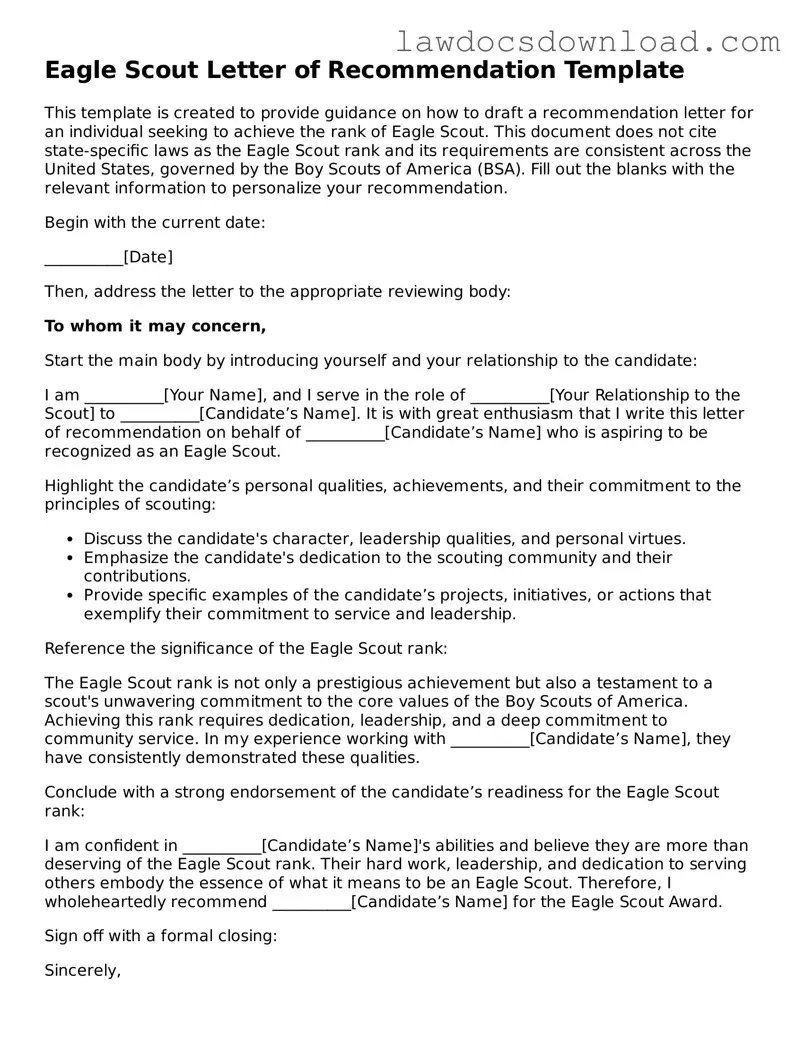Eagle Scout Letter of Recommendation Template
This template is created to provide guidance on how to draft a recommendation letter for an individual seeking to achieve the rank of Eagle Scout. This document does not cite state-specific laws as the Eagle Scout rank and its requirements are consistent across the United States, governed by the Boy Scouts of America (BSA). Fill out the blanks with the relevant information to personalize your recommendation.
Begin with the current date:
__________[Date]
Then, address the letter to the appropriate reviewing body:
To whom it may concern,
Start the main body by introducing yourself and your relationship to the candidate:
I am __________[Your Name], and I serve in the role of __________[Your Relationship to the Scout] to __________[Candidate’s Name]. It is with great enthusiasm that I write this letter of recommendation on behalf of __________[Candidate’s Name] who is aspiring to be recognized as an Eagle Scout.
Highlight the candidate’s personal qualities, achievements, and their commitment to the principles of scouting:
- Discuss the candidate's character, leadership qualities, and personal virtues.
- Emphasize the candidate's dedication to the scouting community and their contributions.
- Provide specific examples of the candidate’s projects, initiatives, or actions that exemplify their commitment to service and leadership.
Reference the significance of the Eagle Scout rank:
The Eagle Scout rank is not only a prestigious achievement but also a testament to a scout's unwavering commitment to the core values of the Boy Scouts of America. Achieving this rank requires dedication, leadership, and a deep commitment to community service. In my experience working with __________[Candidate’s Name], they have consistently demonstrated these qualities.
Conclude with a strong endorsement of the candidate’s readiness for the Eagle Scout rank:
I am confident in __________[Candidate’s Name]'s abilities and believe they are more than deserving of the Eagle Scout rank. Their hard work, leadership, and dedication to serving others embody the essence of what it means to be an Eagle Scout. Therefore, I wholeheartedly recommend __________[Candidate’s Name] for the Eagle Scout Award.
Sign off with a formal closing:
Sincerely,
__________[Your Name]
__________[Your Position/Title]
__________[Your Contact Information]
